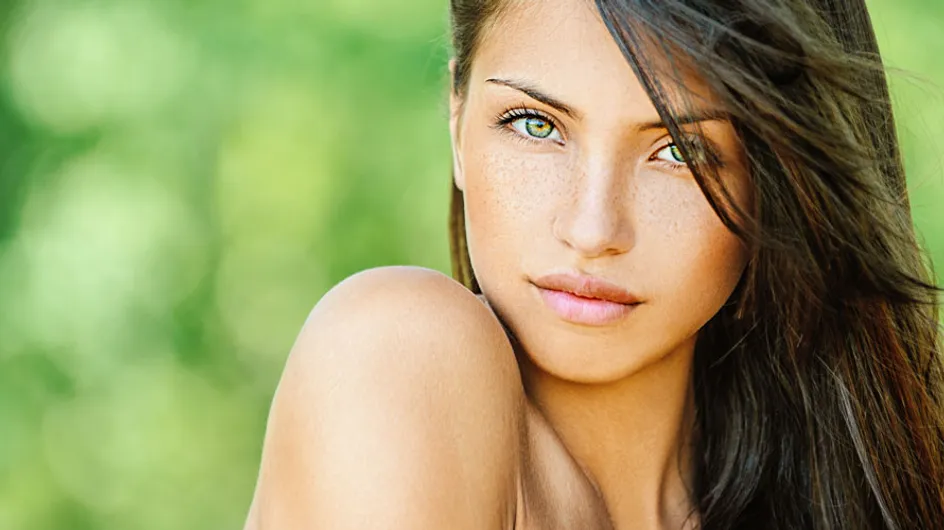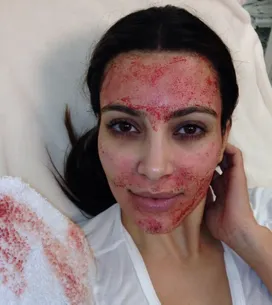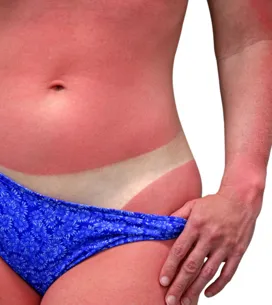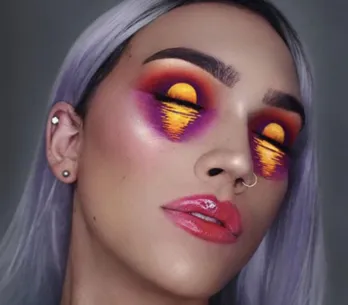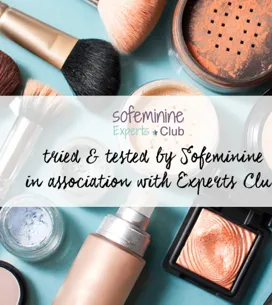Dr Adam Friedmann at The Harley Street Dermatology Clinic says, “Acne is a common condition characterised by blackheads, whiteheads and cysts. It affects the greasy and hair-bearing areas such as the face, chest and back which can be caused by a combination of overactive grease-glands, hormones and bacterial infection."
So how can we banish our blemishes for good?
“Unfortunately avoidance of acne can be tricky, but it usually gets better over a year or two, so the first line of treatment is to simply suppress the inflammation until the acne disappears naturally," he says. From lotions to tablets to serums - your options are literally endless. It's picking the right one that's the hard part. But don't worry, that's where we come in.
Say your last goodbyes. We're re-educating you on proper skin care and treatment for every type of spot. But before covering how to tackle each best lets take a look at some ways in which we can help avoid flare-ups in the first place...
Get rid of junk food: That means ditching crisps, sweets, chips and pretty much anything else that's loaded with fat and sugar. To keep your skin behaving, try to enjoy as much fresh whole foods as possible. Remember, you are what you eat!
Drink lots of water: Drinking water isn't a miracle cure for acne or scarring, but it does help hydrate the skin. If your skin's dehydrated, chances are your skin is probably looking pretty dull right now. This is because the lack of moisture in your skin has caused oils to harden and your pores to become clogged. Ick. Chug that water, girl.
Ditch white foods: These food have a higher GI (glycemic index) so (YES) this means getting rid of cakes, white pasta, pastries, bread and pretty much anything to do with white flour or highly refined sugar. Unless you want a hormonal cascade, they're doing no good for your skin.
Go easy on the dairy: This is because milk is hormone ridden. Try to go for whole organic options if you can as these varieties have less additives. Most full-fat options are actually better for you!
Fish oil: Omega 3-fatty acids are a godsend for acne. Not only do they help retain moisture in your skin, but they also help control the production of leukotriene B4, which is a molecule that can cause excess sebum to build up and cause inflammatory acne. Try a daily supplement like Biocare's Mega EPA (Omega-3 Fish Oil), a high potency capsule created from sardines and anchovies to maximise the purification process.
Keep in mind that despite supplements it's still important to maintain a healthy diet. So make sure to consume as much Omega as you can. Things like salmon, leafy greens, walnuts and avocados are chock full of them. Eat'em up!
Blackheads
Ever get those dark pesky spots on your face? Nose strips, scrubs, exfoliators - we've done it all. They seem like one of the hardest things to get rid of, but not anymore...
WHAT: "Blackheads are open comedones which often occur as part of an acne breakout and develop on the face neck, chest and back," says Dr Friedmann. Basically, they're blocked hair follicles that darken in colour from oxidation!
WHY: "Blackheads are caused by overactive grease glands" say Dr. Friedmann. But whatever you do, don't pick at them! This runs the risk of scarring (not another damn scab) and the possibility of spreading the bacterial infection. You see, spots are made up of bacteria. So if we start picking them it can cause them to push bacteria back into the skin causing further blockage or in some instances, the spread of bacteria elsewhere on the face. Yuck.
HOW: Using retinoid creams or gels are an effective treatment to get rid of blackheads. They work by unblocking your pores by speeding up your skin-shedding cycle. Use these creams once or twice a day. If they're irritating your skin too much ask your dermatologist if you can reduce your dosage to every other day.
Sebaceous filaments
You know those dark spots on your nose that you continuously pick at and keep coming back? Often we mistake them for blackheads, but they're actually completely normal. Yep, that's right NORMAL. First you've heard? Let us explain...
WHAT: These dots appear on oil bearing parts of your face - mainly we see them on the nose and chin. The difference here is that they're not infectious - it's simply just a build up of oils and keratin that deposit in the skin (and if you try getting rid of them they'll fill right back up).
WHY: These naturally occurring deposits channel the flow of sebum along the lining of the pore. So in other words, it manages the sebum. With age, you naturally produce less sebum which is only when they might become less noticeable. Maybe ageing isn't such a bad thing after all, hey?
HOW: These little dots appear lighter than blackheads and although you may want to squeeze them out, there's really no point. You'll never get rid of them. Yes, tragic, but at least you know it's not a spot! The first step here is accepting them. They're a part of your skin's normal functioning. Think about it. If they really annoy you, try retinol creams and gels to help minimise their appearance, but remember, everyone has them!
Whiteheads
They're gross and embarrassing. Period. But there are things we can do to conquer these little buggers.
WHAT: Blackheads and whiteheads are pretty similar, in fact they fall in the same category for acne! The only difference is that blackheads are open comedones and white heads are closed. Because there's no air circulating within a whitehead the plugged follicle can become irritated and is always white topped.
WHY: Excess sebum, dead skins cells and bacteria are all breeding grounds for spots. So again, similarly to blackheads when your pores become clogged, pimples form.
HOW: Because whiteheads are closed, treatment for them will differ to blackheads. Dr Friedmann says, "Acid based face washes are useful if you are experiencing outbreaks of whiteheads. Benzoyl peroxide and salicylic acid are both good ingredients to look for when searching for a product."
If you want to target a spot head on try Dermalogica's Special Clearing Booster. This 5% Benzoyl peroxide solution helps clear and prevent breakouts while calming ingredients, sage and tea tree help calm irritation.
But if you're still struggling to control them, don't worry, there are other options. Dr Friedmann says, "If the topical creams don’t work, patients usually respond very well to oral antibiotics such as tetracyclines." Talk to your dermatologist about your treatment options - there's always something for everyone.
Papules and Pustules
You may be surprised to find out that the most common spots we whinge about are likely to papules. Yep, we thought they were whiteheads too! Turns out, they're not. Here's why...
WHAT: It's easy to confuse whiteheads with papules and pustules but they are indeed different. In fact, papules and pustules are a more serious form of acne, in other words they're inflammatory whereas whiteheads and blackheads are a fairly mild type of acne that isn't inflamed.
The difference between a papule and pustule is simple, "a pustule has puss in the centre," says Dr. Friedmann. These spots are often red and irritated. If it's a pupsule expect a white or yellow dot to form in the centre.
WHY: From lifestyle and diet to hormones and genetics - there are TONS of reasons these spots form so they can be very difficult to avoid if you're prone. But as Dr Friedmann simply puts it, "the better you look after yourself the better your skin."
HOW: As well as using products containing salicylic acid and benzoyl peroxide there are other things you can do to treat your acne. With these types of pimples, Dr Friedmann also recommends taking tetracycline-based antibiotics to help fight bacteria in the body and reduce inflammation. Consult your doctor for more advice.
Nodules and cysts
Nodules and cysts are those hard painful red bumps that linger for days on end. (We detest these.) How do you get rid of them fast?
WHAT: Nodules and cysts are considered a severe form of acne. Deep seated inflammations lead to the formation of nodules and cysts which are painful and often cause scarring.
WHY: Most types of acne are caused by the same things. Excess sebum, hormones, dead skins cells - they're the perfect cocktail for break outs. But sometimes, blemishes can get out of hand. Nodules and cysts form when the over-producing sebum bursts beneath the surface, hence the gorging red lump our face. The only difference between nodules and cysts is that cystic spots are filled with pus. Here's how to kill the infection...
HOW: When it comes to this type of acne, Dr Friedmann recommends acting FAST. "If the nodules and cysts are quite big it’s best to treat them aggressively with a retinoid in an effort to reduce the likelihood of permanent scarring." A combination of antibiotic tablets and topical treatments is usually the first treatment option for severe acne.
But if you're a bride-to-be and have a bulging spot emerging, fear not, "a cortisone injection can quickly reduce swelling and redness of a cyst," says Dr Friedmann. Thank god for dermatology!
However, if you’re a regular sufferer of mild to moderate acne there’s a new gadget on the market that could be life changing. The cordless spot fighter from No!No! Skin allows you to bring professional acne phototherapy right in the comfort of your own home. The therapeutic light helps speed up the healing process getting you one step closer to clear, gorgeous skin. And the best part? It only takes a few seconds to use!
Bacne and Chacne
Our faces aren't the only victims under acne - our backs, chests - they're all at risk too!
WHAT: Blackheads, whiteheads, papules - all different forms of acne can appear on your chest or back.
WHY: There isn't any real evidence to prove why people are more prone in these areas, but Dr Friedmann says "areas of shaving are likely to see more." If you workout loads, make sure to wear light breathable clothing and shower straight after to avoid clogged pores.
HOW: Treatments for this are similar to acne on your face, it's just about identifying what type of spots you have and what the best treatment for it is.
If you're not sure where to begin try Murad's Blemish Body Wash to heal and soothe the skin and Murad's Clarifying Body Spray for spot-busting salicylic acid and soothing lemon grass oil. This will help deep cleanse pores while healing and preventing future breakouts.
Is you're skin's still not behaving? Don't worry, there are still options...
For cystic acne most dermatologists would recommend isotretinoin - an oral pill, usually taken over a 5 month course. But only as a last resort!
"Acne that is very disfiguring, scarring or long-standing is classed as severe, and requires stronger treatment. Isotretinoin is an effective treatment for this but there are side effects to consider," says Dr Friedmann.
Side effects may include an increased risk of anemia, joint pain and dry areas of the skin, eyes and lips. It's intense, but if you can get through the side effects the results could be amazing!
Our best advice? Treat your skin how you want to be treated. What do you do to combat your pimples? Tweet us @sofeminineUK!
You may also like:
Pantry Pampering! 40 DIY Beauty Tricks You Can Steal From Your Kitchen
Stop eating burgers! What your spots are trying to tell you!
Spots, Puffy Eyes & Parched Skin: 10 Beauty Hacks To Hide A Hangover
